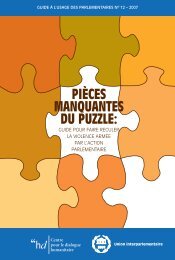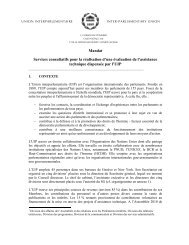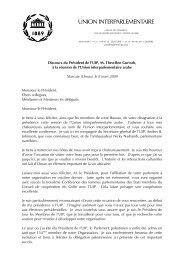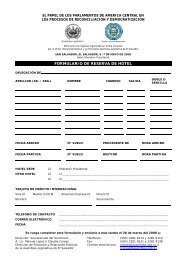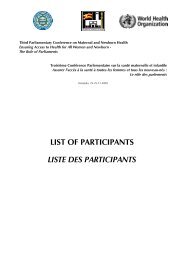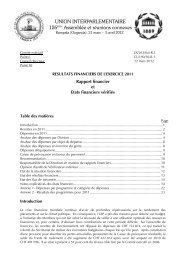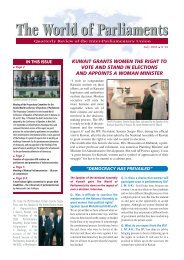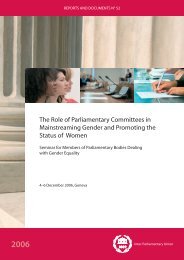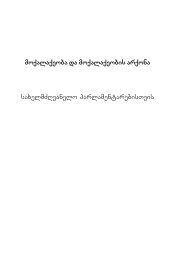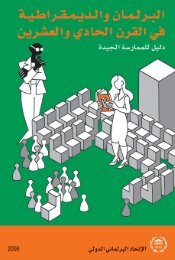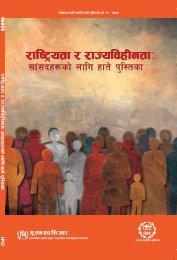MISSING PIECES - Inter-Parliamentary Union
MISSING PIECES - Inter-Parliamentary Union
MISSING PIECES - Inter-Parliamentary Union
You also want an ePaper? Increase the reach of your titles
YUMPU automatically turns print PDFs into web optimized ePapers that Google loves.
THEME 4<br />
front of me. He didn’t point it at me, he just let me know it was there’. 11<br />
Globally, multiple, or ‘family’ murders (including of women and children)<br />
appear to be more common where guns are used in the home to intimidate<br />
and perpetrate intimate partner violence. A high percentage of these<br />
murders conclude with the suicide of the perpetrator. 12<br />
CHOICES AND ACTION<br />
A common but unhelpful stereotype in the analysis of armed violence<br />
identifies women as victims (often with children), while men are seen as<br />
violent perpetrators. Clearly, not all men are violent or pro-gun (just as<br />
not all women are naturally suited for conflict resolution), and research<br />
and policy attention is needed to better understand why many men and<br />
boys choose not to engage in gun violence. In order to improve the effectiveness<br />
of policies and programmes to prevent gun misuse, additional<br />
research is needed on those who seek to ‘do the right thing’ and avoid<br />
violent behaviours, as well as on the ways that women and girls may sustain,<br />
encourage, or commit gun violence.<br />
RELEVANCE TO THE UN PROGRAMME OF ACTION<br />
The PoA has few references to gender. Men, who make up the largest number<br />
of direct victims and perpetrators of gun violence, receive no explicit mention.<br />
Women are referred to as particularly vulnerable, along with children<br />
and the elderly: ‘Gravely concerned about its [the illicit trade in small arms]<br />
devastating consequences for children…as well as the negative impact on<br />
women and the elderly . . .’ (Preamble). It is not clear how the omission of<br />
men’s vulnerabilities to gun violence and the weak references to women<br />
affects implementation.<br />
1. Men, masculinities, and guns<br />
Across cultures, the largest number of acts of violence are committed by<br />
men. This behaviour appears to be the product of society and history rather<br />
than biology: men’s near monopoly of gun use can be seen as a manifestation<br />
of a lifetime’s socialisation into violent expressions of manhood and<br />
cultures in which male gun use is regarded as the norm. 13<br />
In times of war, men and boys are actively encouraged and often coerced<br />
into taking up the roles of combatants. In countries characterised by<br />
violence, war, or high levels of gun possession, young men may use guns<br />
83



